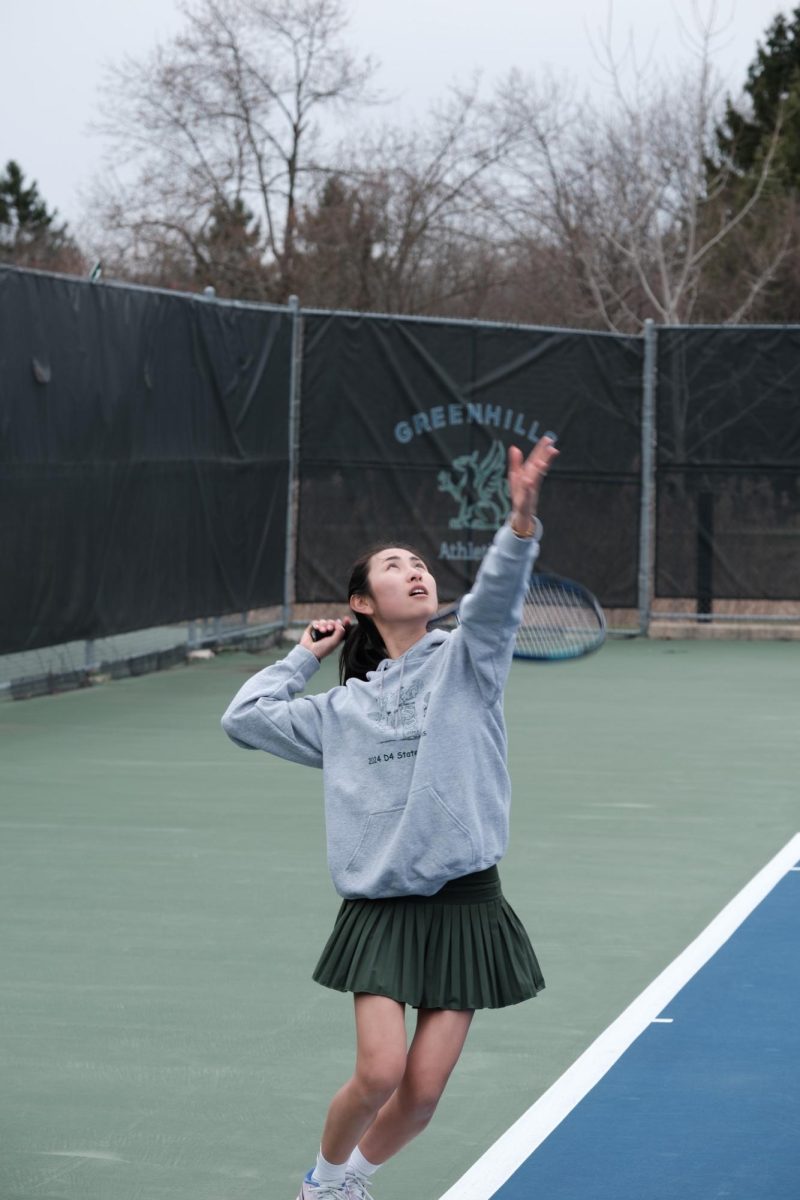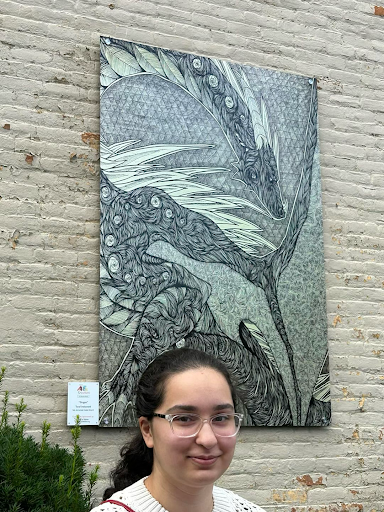In recent weeks, the fluctuating weather has brought attention to the inconsistency of the indoor temperature on campus, and have left students stressing about the sudden bursts of heat and cold. The temperature of classrooms has also raised concerns about the productivity of students and faculty, as well as causing discomfort and affecting the learning environments.
“Most of the thermostats are set for about 70 degrees,” said director of operations, Ken Geremia. “Some rooms are draftier than others, so they’ll be set higher than others, and warmer rooms will be set lower than others.”
Although the school tries its best to keep the students comfortable, there are still constant changes in the temperatures of specific classrooms due to students flowing in and out of certain areas.
“If 100 students come into a forum set at 50 degrees, the temperature in that forum would go up, and automatically the heater would turn off, and because it’s so cold outside, that temperature could cool the room down again,” said Geremia. “But if it’s 70 degrees outside, and the heater is running, and 100 students come in and raise the temperature, the heater turns off right away, but it could take two hours before the temperature in that room comes back down.”
The transition from summer to fall has caused temperatures to rise and drop unexpectedly, which becomes a inconvenience to students who want to remain focused during the school day.
“I’m very temperature sensitive, especially the heat, so I wish it was colder in other areas because it’s easier to solve being cold rather than being hot,” said AJ Simon ‘25. If a place is too hot, it’s all I can focus on, but when a place is too cold, I can just leave a sweatshirt on.”
In addition, athletes who practice in the gyms also struggle with the hot temperatures. In order to increase air flow and stay cool, the fans must be turned on, and the doors leading to the outside of the gyms need to be propped open.
“When we have volleyball practice on really hot days, it’s really hard to focus, and running feels like torture because of how hot you get,” said Allison Shamus ‘27.
Shamus has also expressed her frustration regarding the erratic temperatures in the freshman forum, and how the heat on campus has affected her productivity.
“When I’m in the 9th grade forum, I’m thinking more about the heat than what I’m actually trying to focus on; but if I was in the cooler forum, I wouldn’t be affected by [how cold it is],” said Shamus. “I wish it was a lot cooler in general. Especially in a classroom where it’s really hot or really cold, because I would be more focused on how cold or hot it is rather than my actual studies, and it gets really bad if I’m trying to focus because it can make me tired.”
Teachers have also voiced their concerns about the inconsistent temperatures on campus and their effects on the learning environment in classrooms, and how students struggle to stay focused in class.
“I taught down by the robotics lab last year, which is a frozen tundra, and as someone who gets hot easily, that was something I really appreciate, and maybe took for granted,” said math teacher Greg Huntoon.”
This year, Huntoon’s classroom was moved to room 4300 in the senior forum, and many students have reported this classroom to be sweltering in the summertime. However, students have learned to appreciate the warmer temperature of Huntoon’s classroom due to the recent low temperatures.
“During early September, it was pretty hot and it got pretty unbearable. It made it hard to teach and made it even harder for the kids to learn. The [12th grade] forum itself has done a good job by being air conditioned and staying nice and cool, so I find that I would open the door a lot to try and get some air flowing in. But since the weather is getting cooler, I noticed that students like to come early to class to feel warmer.”
On the other hand, math teacher Lisa Flohr teaches in room 3008 across from the 9th grade forum, which has become a place for students and teachers to go when they’re overheating.
“I think in relation to the other classrooms in the building, this is probably one of the colder classrooms in the school,” said Flohr. “I think [the classroom] is a nice, safe haven for students that are in the heat. It’s easier to layer up in a cold classroom, so I’d rather my room be cold than hot. Some students might find it challenging when you’re overly cold or overly hot, which can make you unfocused.”
Izzy Collins ‘25 is one of the few students who find the temperatures in the school to be too chilly.
“The school is entirely too cold, I’m freezing all the time,” said Collins. “Sometimes, my hand gets so cold that I can’t write properly. But in the summer, the temperature is perfect. I think the best temperature for the school is around 75 degrees.”
Since some are cooler than others, Shamus hopes that in the future, the temperatures will find a middle ground.
“Mx. Huntoon’s room, [which is also room 3008], is always freezing, so if some of that cool air could get into the warmth of the 9th grade forum, that would really help,” said Shamus. “I just wish there was a way to get the cool temperatures of classrooms into other places.”
A reason why some classrooms are warmer or cooler than other is because classrooms with windows are not equipped with air conditioning.
“An exception is the part of the building where there is a geothermal system, which is the wing where the 11th grade forum and the robotics lab is. That part of the building air conditioning and heating year round.”
Over the summer, the north boiler room and the control system within it underwent renovation.
“We were having problems with controls for the system which were very old and needed updating, so we spent a lot of time fixing and renovating that. A lot of it is computer and electronically monitored now.”
Next summer, the south boiler room is scheduled to be renovated, along with the rest of the control system. However, these new upgrades will not only benefit the students and faculty, but also the school and environment.
“In the end, we anticipate, that we will probably cut our natural gas usage and energy costs by as close as 40 percent, which is a huge savings for the school, and is much more eco-friendly,” said Geremia. “The boilers are much more efficient, better, and modern, and don’t run when we don’t need it. At this point, we replaced half of the boilers, and we hope that we’ll see a lot of savings already.”



















